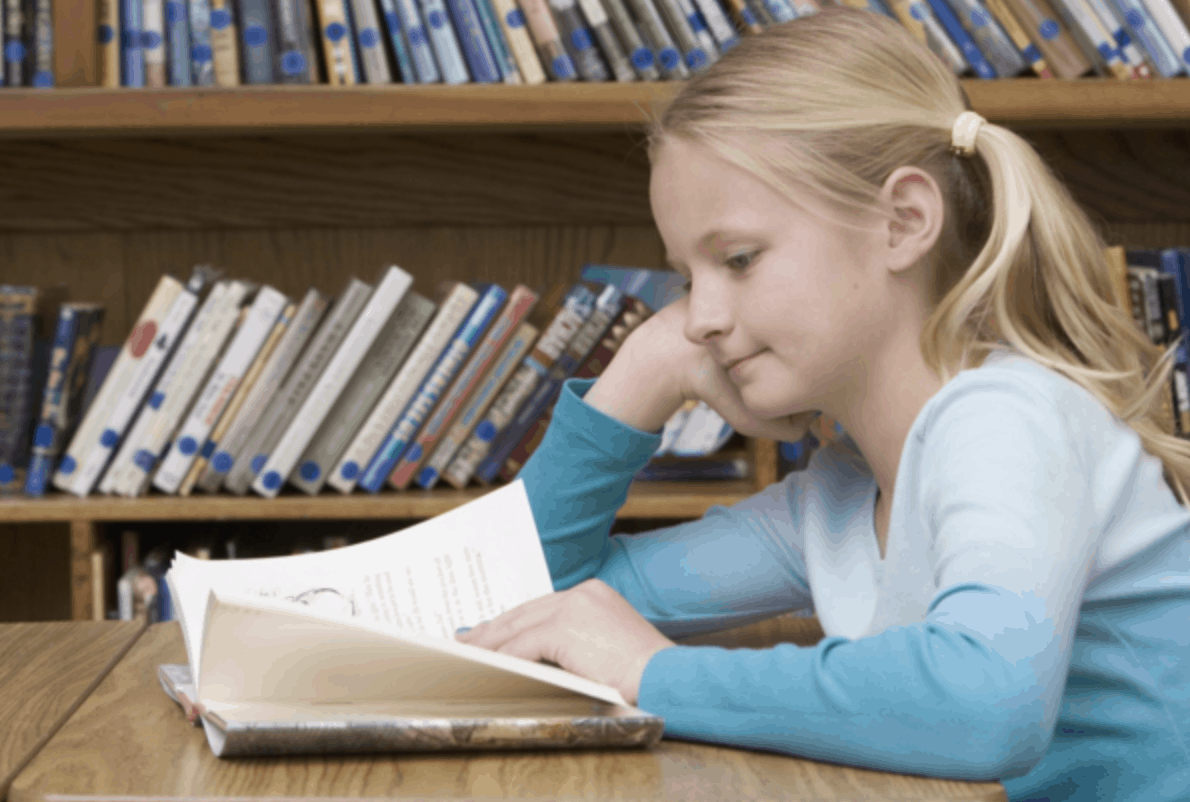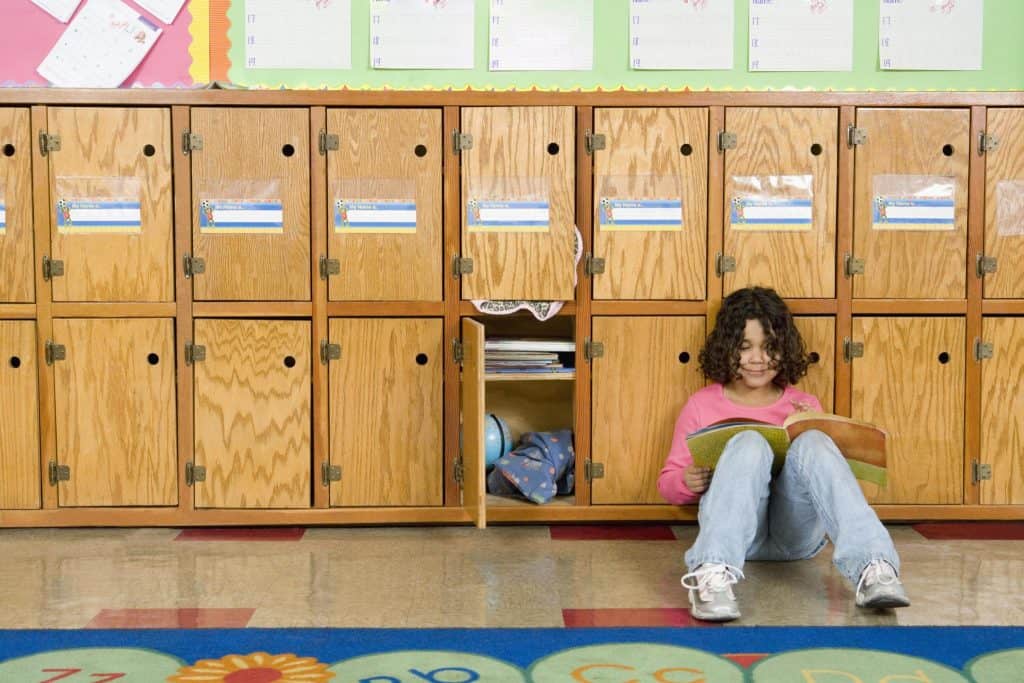If you think students start learning to read from the moment they enter kindergarten onward, think again! Children naturally develop pre-reading skills much earlier–even in infancy, the way babies experiment with language can become the building blocks of literacy later on. Because of this, a student’s reading ability comes from experiences outside the classroom as much as it does inside it.
The majority of teachers (87%) agree that many students face learning barriers that come from outside of school.[1] But when asked what these factors might be, fewer have concrete answers. Early literacy development is complex and, while no one thing leads to success or failure, both social and cognitive elements contribute to it. Educators, however, can learn a few common factors their students might identify with to provide the best support possible.
Read on to learn the five stages of literacy development and how sociocultural factors or learning disorders can affect your students’ reading comprehension. Then, discover how a growth mindset and the right strategies can help struggling readers make academic gains in literacy.
How Children Develop Reading Comprehension
Understanding how literacy and language development in early childhood works can help you learn why certain factors can change it. One of the most popular theories comes from Dr. Jeanne Chall, an esteemed Harvard University educational researcher. After decades of studying how students learn to read, she pinpointed five crucial stages of reading development that students should reach throughout their educational career.
Chall’s five stages of reading development are:
- Emerging pre-reader (6 months-5 years)
- Novice reader (6-7 years)
- Decoding reader (7-9 years)
- Comprehending reader (9-15 years)
- Expert reader (16 years and up)
While the final three stages are all crucial for mature literacy development, the first two (emerging and novice) are essential stages of development for early students. Emerging pre-readers are mostly focused on skills that lead to reading later on, like learning the letters of the alphabet or becoming familiar with printed text.[2] While they don’t necessarily start reading until they begin school, children are already picking up traits that contribute to it later on. Any exposure to books, especially being read aloud to, can help them pick up literacy faster later on.[3]
Once children begin elementary school, they will start to associate letters and sounds with printed or spoken words.[4] This phase is known as the novice reader. A student will usually enter this stage during kindergarten or first grade, though the transition from pre-reading to early reading is different for each student. The more complex words that students are exposed to through language and print, the faster they will enter this stage.
The last three stages happen later in a student’s academic career: decoding, comprehending, and expert.[5] Decoding readers start to focus on the story’s meaning instead of just word recognition, and their speed and fluency increase dramatically. Comprehending students build upon these skills by recognizing themes, and they read to learn about new experiences, understand issues important to them, and gain more complex knowledge. And expert readers, the last stage, focuses on reading from a wide variety of sources and synthesizing information into their own cohesive essays.
The earlier you address any issues that might affect a student’s reading skills, the stronger their academic gains will be. The ideal time is while they are either in the pre-reading or novice stage. If you’re an early education teacher, keep an eye out for various factors that could contribute to student’s literacy development and provide appropriate support.
Sociocultural Factors that Affect Emergent Literacy
According to Dr. Nell Duke, an early education professor at the University of Michigan, culture is one of the primary factors that affect reading development– “When you read Arabic,” she explains, “you read it from right to left–something as fundamental as that will vary on the cultural and the sociolinguistic context in which reading occurs.”[6]
Cultural contexts can be positive, negative, or neutral. Whether a student reads left to right or right to left, for example, is neither advantageous nor damaging as long as the direction fits the cultural norm. Educators should be aware, however, of which factors are positive or negative so they can assist students and their families as needed.
 One link between socioeconomic status and education, for example, is that there’s often a vocabulary gap between low- and high-income students. By second grade, low socioeconomic status (SES) students know about 4000 less words than their high SES peers. The reason isn’t because under-resourced students aren’t as capable of learning words but that they’re less likely to access early education programs because their family cannot afford it.
One link between socioeconomic status and education, for example, is that there’s often a vocabulary gap between low- and high-income students. By second grade, low socioeconomic status (SES) students know about 4000 less words than their high SES peers. The reason isn’t because under-resourced students aren’t as capable of learning words but that they’re less likely to access early education programs because their family cannot afford it.
According to Dr. Duke, a literacy achievement gap in education is “not any fault of family, not any fault of children–it’s the fault of a system that isn’t providing equitable access to quality preschool.”[7] Because one in five children in the United States live on or below the poverty line, finding ways to supplement these deficiencies is a core responsibility for educators.[8] The more access students of all SES levels have to classroom and at-home resources, the more vocabulary gaps close.[9]
Another cultural factor that can affect a student’s reading comprehension is whether they’re learning a second language. English language-learning students, for example, may have trouble learning to read in English if they haven’t achieved oral fluency yet. Once a student has reached bilingualism, however, they’re actually at a cognitive advantage for learning to read.[10] By nurturing pre-reading skills in a bilingual classroom, your students’ academic gains can reach or even exceed their monolingual peers.
Viewing Struggling Readers Through a Fixed Mindset vs Growth Mindset
 Regardless of the cause, the most important way to help students with reading comprehension difficulties is to view them through a growth mindset. The definition of growth mindset comes from Dr. Carol Dweck, a psychologist at Stanford University. While researching how to reach under-resourccd students, she found that our beliefs about ourselves and others can influence educational outcomes.[14]
Regardless of the cause, the most important way to help students with reading comprehension difficulties is to view them through a growth mindset. The definition of growth mindset comes from Dr. Carol Dweck, a psychologist at Stanford University. While researching how to reach under-resourccd students, she found that our beliefs about ourselves and others can influence educational outcomes.[14]
Teachers usually view students through one of two lenses: a fixed mindset or a growth mindset. Educators with a fixed mindset assume that a student’s intelligence, personality, and creativity cannot change. Any successes or failures their students reach are a result of who they are rather than what they do. A growth mindset, on the other hand, allows teachers to view failure as a learning opportunity and bridge to success later on. These educators believe that their student’s academic ability can change and develop over time and that their intelligence is more than just their grades.
Studies have found that using a growth mindset for students in your class can help induce academic gains in struggling readers, particularly those from under-resourced families.[15] Try to view every child in your class as capable of success not in spite of, but because of their failures. While working with struggling students, celebrate their strengths and teach them that even if they struggle with reading now, they have the capacity for strong reading skills.
How to Help Struggling Readers Develop Reading Fluency
Any time or money spent in early reading programs can lead to profound social change.[16] With the right mindset, every student in your class has the potential to develop stronger literacy skills.
Use these reading comprehension strategies to help struggling or reluctant readers learn basic literacy skills:
- A 2018 study found that students learn to read best using a multisensory approach.[17] Try adding visual or audio aids to your assignments, like read-aloud or multimedia activities
- If you know that a student has a reading disability, provide accommodations. Discuss the disability with their parents and offer help, resources, and extra time on reading assignments as needed
- Build a strong foundation in fundamental reading skills like phonological awareness or letter recognition first before moving onto more complex topics
- Along with constructive criticism, praise your students as their reading skills improve. Positive encouragement can help motivate students and strengthen their academic confidence
- Assign take-home books and reading assignments to your students. Research on how to help struggling readers suggests that parent engagement helps close the vocabulary gap and significantly raises literacy scores[18]
Sources:
Scholastic Corporation. Barriers to Equity in Education. Retrieved from scholastic.com: http://www.scholastic.com/teacherprincipalreport/barriers-to-equity.htm.[1]
Chall, J. Stages of Reading Development. McGraw Hill, 1983, pp. 10-24.[2]
Sénéchal, M., and LeFevre, J. Parental Involvement in the Development of Children’s Reading Skill: A Five‐Year Longitudinal Study. Child Development, January 2003, 73(2), pp. 445-60.[3]
Chall, J. Stages of Reading Development, pp. 10-24.[4]
Ibid.[5]
Claro, S., Paunesku, D., and Dweck, C.S. Growth mindset tempers the effects of poverty on academic achievement, August 2016, 113 (31).[6]
Ibid.[7]
National Center for Children in Poverty. Child Poverty. Retrieved from nccp.org: nccp.org/topics/childpoverty.html.[1]
Heckman, J.J. The Economics of Inequality: The Value of Early Childhood Education, American Educator, 2011, 35(1), pp. 31-35.[9]
Kieffer, M.J. Socioeconomic Status, English Proficiency, and Late-Emerging Reading Difficulties, August 2010, 39 (6).[10]
The Yale Center for Dyslexia and Creativity. What is Dyslexia? Retrieved from yale.edu: http://dyslexia.yale.edu/dyslexia/what-is-dyslexia/.[11]
Gabrieli, J.D.E. Dyslexia: A New Synergy Between Education and Cognitive Neuroscience. Science, July 2009, 325, pp. 280-83.[12]
August, G.J., and Garfinkel, B.D. Comorbidity of ADHD and reading disability among clinic-referred children. Journal of Abnormal Child Development, February 1990, 18(1), pp. 29-45.[13]
Claro, S., Paunesku, D., and Dweck, C.S. Growth mindset tempers the effects of poverty on academic achievement.[14]
Ibid.[15]
Rolnick, A., and Grunewald, R. Early Childhood Development: Economic Development with a High Public Return, The Region, December 2003, pp. 6-12.[16]
Smith, G.J., Booth, J.R., and McNorgan, C. Longitudinal Task-Related Functional Connectivity Changes Predict Reading Development, Frontiers in Psychology, September 2018, pp. 6-12.[17]
Kennedy, E. Narrowing the Achievement Gap: Motivation, Engagement, and Self-Efficacy Matter, Journal of Education, 2010, 190(3).[18]


